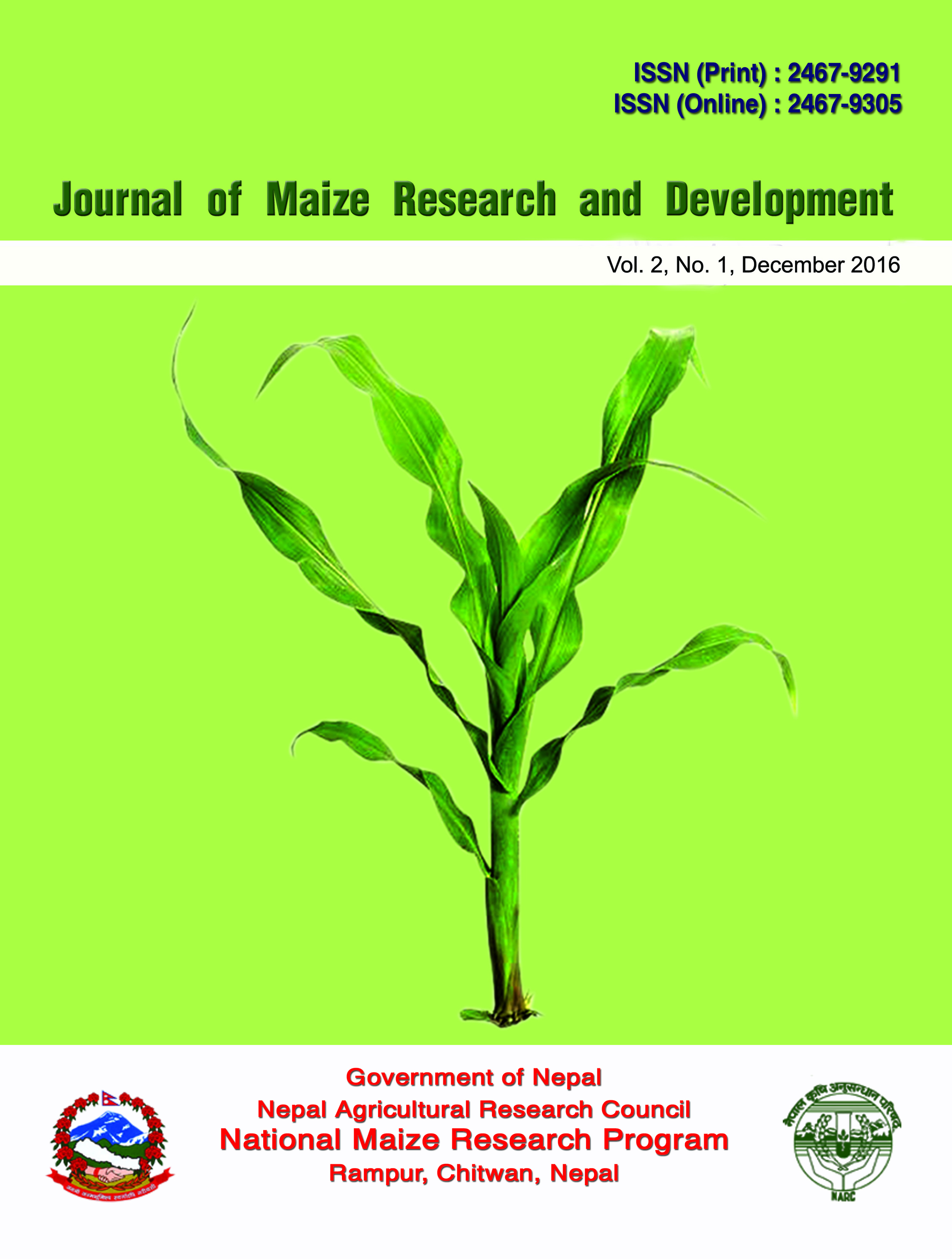Evaluation of maize genotypes for Turcicum leaf blight (Exserohilum turcicum) in Terai and inner terai of Nepal
DOI:
https://doi.org/10.3126/jmrd.v2i1.16221Keywords:
resistant, susceptible, genotypes, severityAbstract
Thirty maize genotypes in 2014-2015 at Dumarwana, Nijgadh, Keureni and Rampur and ten genotypes in 2015-2016 at Anandpur, Shitalnagar, Dumarwana, Nijgadh and Rampur were evaluated for resistance to Turcicum leaf blight (Exserohilum turcicum) under farmers field conditions. The scale used for disease severity ranged from 1-5 scale based on the proportionate leaf area affected by the disease. The combined analysis over locations in 2014-2015 showed that among the 30 genotypes 25 genotypes were resistant (1.0-2.0 scale), and 5 genotypes were moderately resistant (2.1-3.0 scale). Similarly the pooled analysis over locations in 2015-2016 showed that 7 genotypes were resistant (1.0-2.0 scale) and 3 genotypes were moderately resistant (2.1-3.0 scale). The maize genotypes namely Z376-26, Z478-3, Z433-99, Z464-5, Z478-2, Z466-1, CAH1513, RML-95/RML-96, CAH1515, CAH1521, CAH1515, CAH151, CAH153, ZH114228 , Z376-9, Z466-3, Z376-5, RML-32/RML-17, RML-86/RML-96 and 900MGold were resistant with disease severity scale of 1.5 and with higher grain yield in both the years. Thus above genotypes were identified as promising sources of resistance against E. turcicum and they can be used to develop disease resistant and high yielding varieties to enhance maize productivity in terai and inner terai of Nepal.




